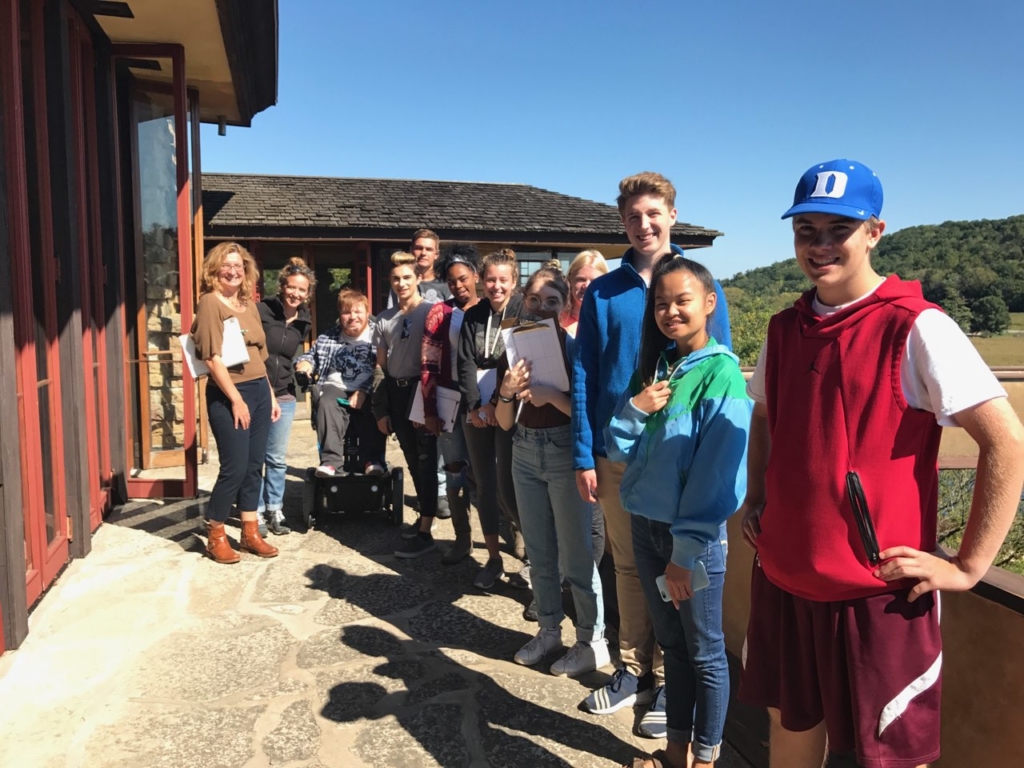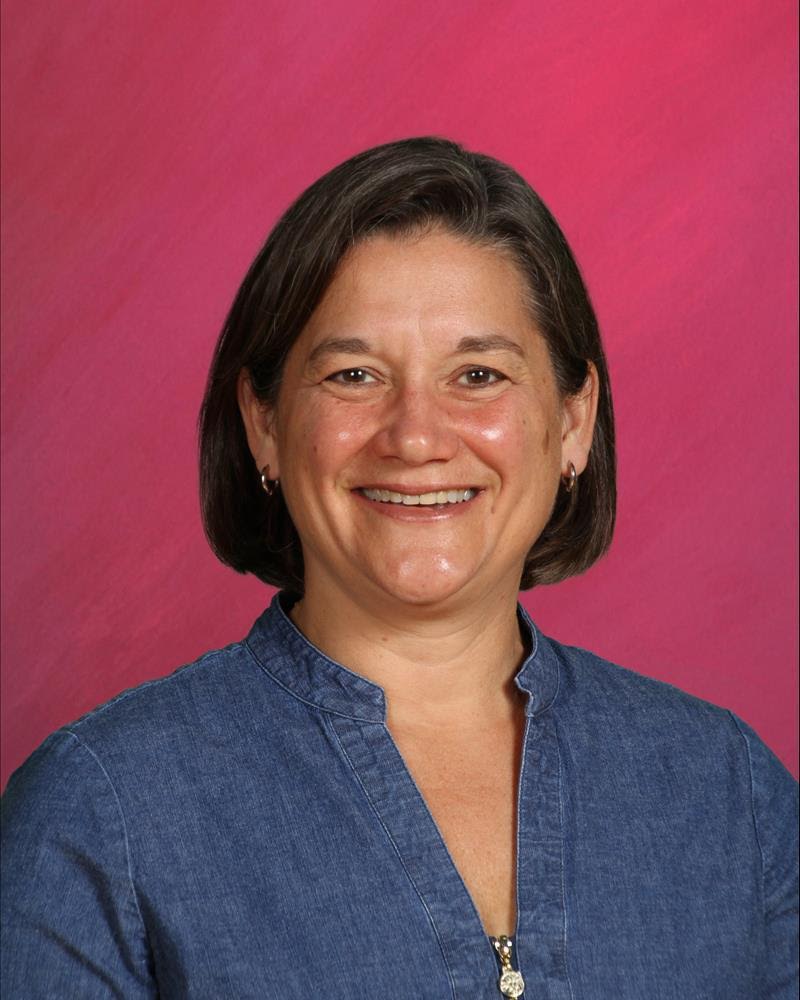Like so many educators, I know the current system doesn’t work. For me, starting the school was about getting into action, saying let’s start from scratch and build a school that really does engage all young people as learners.
Jill Gurtner, Founder and Principal of Clark Street Community School
We sat down with Jill Gurtner, Founder and Principal of Clark Street Community School, to learn more about why she started the school and how she hopes to serve all learners in their space while inspiring other educators to adopt a learner-centered model.
Q: What prompted you to start a school from scratch?
Jill: I have been a high school administrator in this school district (Middleton-Cross Plains Area School District in Wisconsin) for 27 years. When we started planning Clark Street Community School, just over ten years ago, I was an assistant principal at the conventional high school and the lead administrator at our alternative high school, which was targeted for students identified as being at risk of not graduating.
When the opportunity arose to start a new school, we started talking as a staff at the alternative high school about our ideas. We would see the most amazing things out of our learners when we had them out in the community, really working on issues and problems that mattered to them. They could see the clear connection to their learning. We wanted to figure out how to create a school built on those ideas.
Like so many educators, I know the current system doesn’t work. For me, starting the school was about getting into action, saying let’s start from scratch and build a school that really does engage all young people as learners.
Q: We understand that your school attracted learners for whom the conventional school was not working–can you tell us more about why this might be the case?
Jill: Our schools have historically been designed with a very narrow definition of success. For far too many students, the longer they stay in school, the more disengaged they’ve become because this school design doesn’t honor their strengths, passions, or experiences.
Some students internalize this struggle and begin to believe they cannot successfully learn. We began our work with the belief that it was the system, not the students, that needed changing.
Before I share a little more about our learners, I’ll just share that we’ve focused really hard on engaging all learners and have as little focus as possible on compliance. Our big driving ideas for the school are that it is place-based, personalized, and democratic. Our interdisciplinary seminars and competency-based system honor how learning happens naturally.
We also believe that all learners should learn together. We don’t have to separate young people into particular categories or groups. This type of learning is richer and better for all of them.
With that said, the learners who are most likely to look for something different and who have typically come to Clark fall into one of two categories: either they’re struggling and looking for something different, or they and their families have enough understanding of the fact that there are other options and seek them out.
Consistently, those two categories have made up our learner population. As a result, we’ve always had a powerfully diverse group of learners in our school, which has added to the richness of our learning community.
I really thought that over time, as we proved that we could be successful, all students would want to come check Clark out. But, that hasn’t happened. Things haven’t really budged.
I guess I had this very naive notion that if we built this model and could show it was successful—enabling kids to have success both at Clark Street and in their post-secondary experiences—people would come.
I believed that people would want to know what we were doing and would want to learn from us. It turns out that is not enough because the system is just so good at staying stuck. Even though people complain that the system can’t do the things they want it to do, that doesn’t lead to change. And, I don’t mean to diminish educators. Educators are exhausted and working so hard. They don’t have time to go check out the newest thing or really even take time to imagine. I just thought it would lead to more conversations and a broader change.
Some students…begin to believe they cannot successfully learn. We began our work with the belief that it was the system, not the students, that needed changing.
Jill Gurtner, Founder and Principal of Clark Street Community School
Q: You’ve got ten years under your belt. What have you learned?
Jill: The most important lesson is that humanizing the experience and creating communities of learners is absolutely imperative for creating powerful learning experiences.
Our goal is to create safe spaces so that our learners can take the risks they need to take to really learn. We are grounded in restorative practices and an advisory model to ensure learners know themselves and each other well. Creating this kind of environment builds the conditions for learners to truly engage as a learning community.
They feel safe giving and receiving feedback and are constantly in a revision process. Learners self-reflect, engage in peer feedback, and internalize the idea that our work gets better when we share it with others and listen to how others receive it.
Another important lesson, which is related to powerful learning experiences, is having a competency-based model. We all knew when we started that we were not going to use grades or GPAs. We knew that was important, but I don’t think I knew how critical it was to take away the standard, conventional measures that were so arbitrary and external. Removing them has allowed learners to really dig into learning and engage in the productive struggle that learning requires.
What this has led to is a beautiful competency-based model where kids can take and give really powerful feedback because it is truly about learning and producing products that they’re proud of. It helps them make connections to the community and pursue work that matters to other people.
Lastly, everything we do is interdisciplinary, which is more natural to learning than separating everything by subjects.
They see many different ways of being successful, not just one path they must follow. They have lots of ideas about how to be more successful after high school.
Jill Gurtner, Founder and Principal of Clark Street Community School
Q: What opportunities are you seeing or may already be in progress to advance learner-centered in your community?
Jill: Interestingly, there’s been more attention in the last two years. I think the main reason is we’ve worked, from a leadership perspective, to talk more about what learner-centered redesign looks like. We share why it is powerful to be connected so closely to the community, why place-based matters, and that learner-centered language itself matters.
Obviously, we’ve been in a pandemic, which I think has impacted some of this and has created a desire for something different. For example, this year we had fifteen people from the conventional high school and district office join Education Reimagined’s Learning Lab Virtual Orientation—that’s huge!
Having more people understand what’s meant by learner-centered is a hurdle that we haven’t yet been able to overcome. We used to have people interested and excited about the results we were producing, but very few of them understood what we were doing or why it worked. Now that we have people taking the time and energy to deeply understand it, see the vision, and get into the paradigm, it is great. It will open up how to advance the work on a broader scale.
Additionally, we are renewing our charter with the school board and are weaving in some learner-centered language to make it even clearer that we’re up to something different here at Clark.
Q: What has the impact of this work been on learners beyond their time at Clark?
Jill: We treat the community as a learning laboratory and care a lot about learners beyond their time here. We think their connections during their time at Clark help them navigate being a young adult in the world.
In the last few years, we’ve partnered with Mastery Transcript. Together, we are focused on re-inventing how we help learners prepare for what comes after Clark and we’ve found that the kids know themselves so much better because of it. Their transition to post-secondary is a much richer, smoother experience.
They see the available options and, as a result, there is so much more that they want to do and explore. They see many different ways of being successful, not just one path they must follow. They have lots of ideas about how to be more successful after high school. The kids who are going on to college, or have finished college, consistently tell us they’ve felt much more prepared to be successful in post-secondary experiences, particularly because of that feedback and revision cycle at Clark Street.
Learners have learned to ask for feedback and take feedback to improve their work, leading them to have better relationships with adults. They’re not afraid to talk to professors. They know that that’s actually helpful. It’s powerful to witness what is possible when learners feel empowered and they (exhibit) agency in their own learning.

